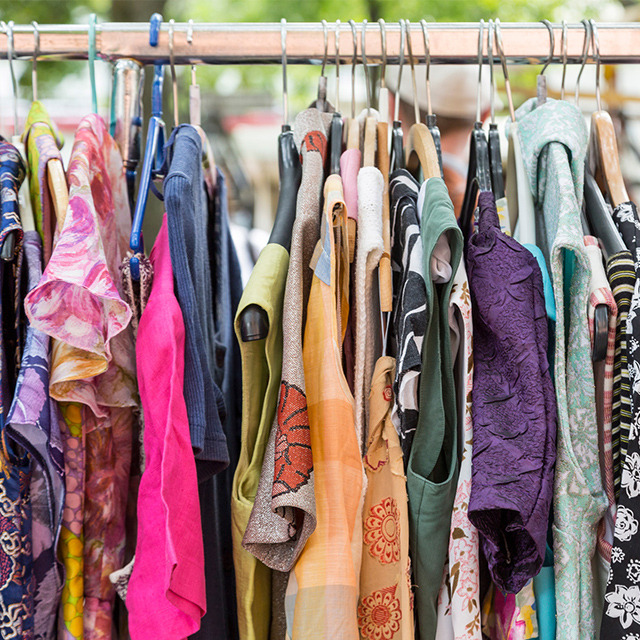In the first part of our Guide to a Conscious Wardrobe series, we talked about the important mindset changes you can adopt to be a champion for the planet while also rocking your personal style. We’ll call them the fundamentals of dressing sustainably:
● Think before you buy
● Use what you have for as long as you can
● Upcycle or find new uses for unwanted clothes
In this follow-up, we’re going to dole out some quick and dirty tips to help you (ironically) clean up your closet. From thrifting resources to how to find a good tailor, this is your one-stop shop for all things sustainable fashion.
Tip #1: Learn how to thrift
Secondhand fashion is in. Big fashion labels are even combing thrift stores for inspiration. Whether you’re a thrift store pro or just taking your first steps, there are secrets that can make your shopping experience way more fruitful.
● Go to shops on Sunday evenings or early in the week. Most thrift stores get an influx of donations over the weekend, so this ensures that you’ll get the best pickings.
● If you find something you like, don’t worry if it’s a little big for you. You can always tailor it (that’s easier than it sounds — read on!)
● Know the difference between a consignment store and a charity store. Consignment stores buy used clothing and mark it up for sale. This can mean higher prices than your local Goodwill (which relies on donations). But it can also save you from having to sift through a lot of undesirables since consignment stores are more choosy about what they put on their racks.
Check out this thrift store directory to find a shop near you. If you don’t live near any thrift shops, apps like Depop and Poshmark allow you to browse secondhand clothes online and have them sent right to your door.
And check out these Instagrammers for some secondhand style inspiration:
Tip #2: Find out where your clothes are made
Learning the truth about where your favorite pair of jeans came from can be tricky. There’s a reason for that: big fashion brands usually outsource to manufacturers around the planet, who then FURTHER outsource to smaller, less regulated garment factories. Tracking all that movement can be a headache, but luckily there are some awesome fair fashion activists out there doing the leg work for us. Check out these websites to learn more about the supply chain behind your clothes:
#3: Learn which brands walk the eco-friendly walk
We live in a wonderful time for conscious shopping. With more people than ever concerned about fast fashion’s hefty price tag, entrepreneurs have begun to answer the call for more sustainably-produced clothing. And many of them are tackling a variety of social issues besides fast fashion. Project Ropa, for example, provides clothing, hygiene products, and employment to people experiencing homelessness.
Conscious fashion lines used to be limited in terms of sizing and the demographics they served. But thankfully, this is changing. Finding eco-friendly fashion that suits your body and personal style has never been easier. And sustainable fashion isn’t just becoming more inclusive for consumers: here’s a list of sustainable fashion brands owned by women of color.
Check out more earth-approved brand in this ethical directory.
#4: Create a capsule wardrobe
When in doubt (at least when it comes to style), do as the French do. A capsule wardrobe is pared down to the essentials — think versatile basics that can be matched with a lot of other pieces. This simple way of organizing will give you room to mix-and-match with accessories and trendy items without spending all your money. Most importantly, building a capsule wardrobe will help you fill out your closet with things you actually need, rather than constantly buying different variants of the same t-shirt. Read this blog to learn more about creating a capsule wardrobe.
#5: Find a good tailor
They might sound fancy, but tailors are actually pretty accessible. Having a go-to shop that can stitch an outfit and make it fit you just right is vital to creating a personalized wardrobe on the cheap. Many dry cleaners offer affordable tailoring services for simple jobs like shortening seams or fixing tears. For resizing or more involved jobs, it’s better to invest in a professional tailor or seamstress. Look for them on Yelp or ask local boutique owners for recommendations. Websites like Thumbtack make it easier to connect with freelance tailors in your area.
Written by: Janie Ryan





